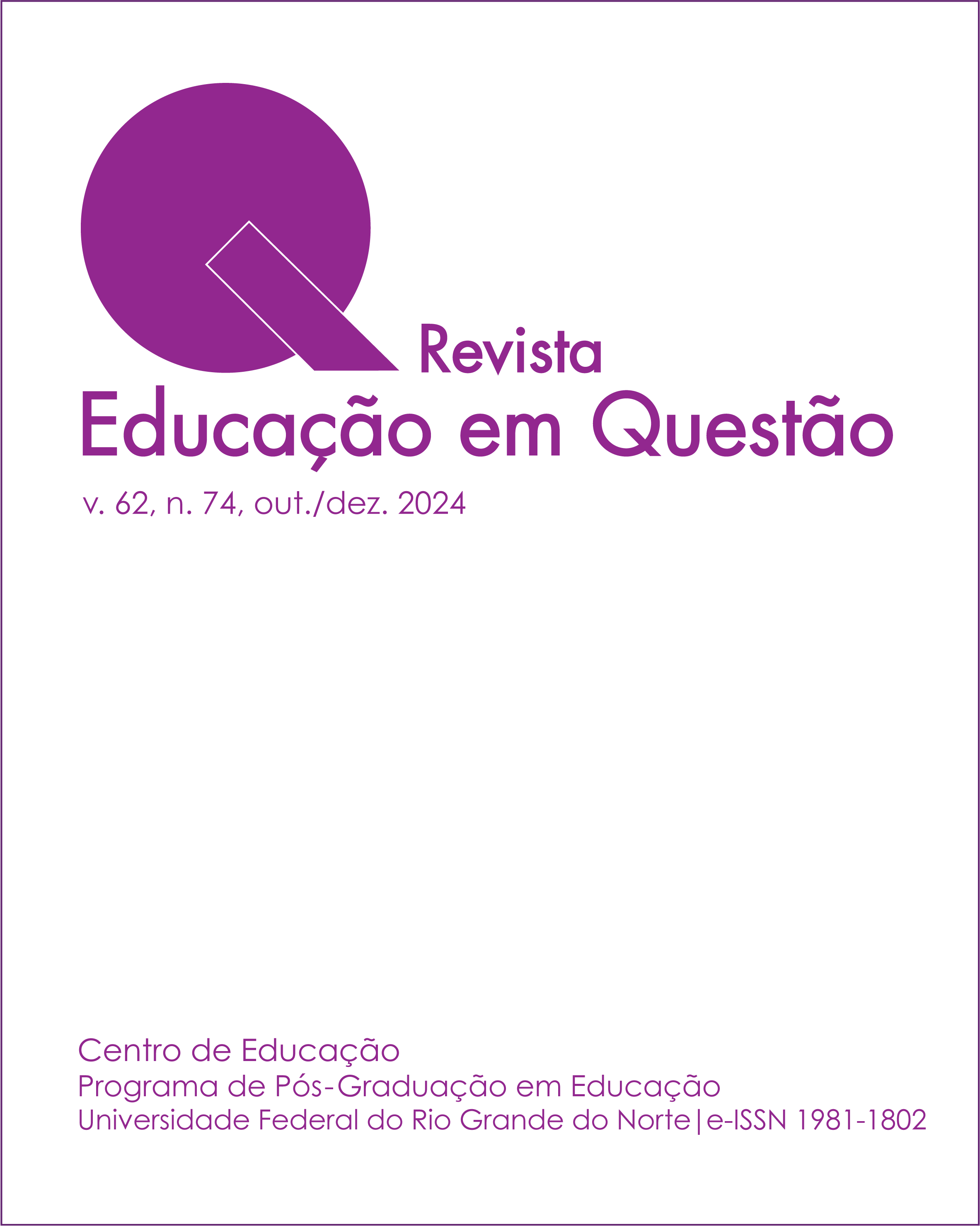Creativity verification of students with and without giftedness indicators after one year in a bilingual environment
DOI:
https://doi.org/10.21680/1981-1802.2024v62n74ID37200Keywords:
Giftedness, High abilities, Creativity, BilingualismAbstract
It is known that the identification of gifted students in schools is still infrequent, especially focusing on their creative potential. Therefore, this article aims to share an example of creativity verification of students with and without giftedness indi-cators carried out over a year in a bilingual environment (Portuguese-English), describing the instruments used to divide the groups, as well as presenting students' performance in creativity in the “Children's Figural Creativity Test” (TCFI). Based on statistical analyzes carried out with a pre- and post-test of creativity in each of the groups, as well as the comparison of results between groups, the development of creativity in a bilingual environment was obtained for both groups at the end of the school year in a different way, with three fac-tors for the group with giftedness indicators and all factors for the group without these characteristics, although with lower results than in the first group.Downloads
References
BARBOT, Baptiste; BESANÇON, Maud; LUBART, Todd. Assessing creativity in the classroom. The open education journal, v. 4, p. 58-66, 2011.
BRASIL. Secretaria de Educação Especial. Política nacional de educação especial na perspectiva da educação inclusiva. Brasília, DF: MEC/SEESP, 2008.
FERREIRA, Taís Crema Remoli. Avaliação da criatividade de alunos com e sem indicadores de altas habilidades/superdotação em ambiente bilíngue. (Universidade Estadual Paulista “Júlio de Mesquita Filho”, campus de Marília). 2020, 188p. (Tese de Doutorado) – Programa de Pós-Graduação em Educação, Universidade Estadual Paulista, Marília, 2020.
LEE, Hangeun; KIM, Kyung Hee. Can speaking more languages enhance your creativity? Relationship between bilingualism and creative potential among Korean American students with multicultural link. Personality and Individual Differences, v. 50, n. 8, p. 1186-1190, 2011.
LEIKIN, Mark. The effect of bilingualism on creativity: Developmental and educatio-nal perspectives. International Journal of Bilingualism, n. 17, v. 4, p. 431-447, 2012.
LEIKIN, Mark; TOVLI, Esther. Bilingualism and Creativity in Early Childhood. Creativity Research Journal, n. 26, v. 4, p. 411-417, 2014.
MENDONÇA, Patrícia Villa da Costa Ferreira; FLEITH, Denise de Souza. Relação entre criatividade, inteligência e autoconceito em alunos monolíngües e bilíngues. Psicologia Escolar e Educacional, v. 9, n. 1, p. 59-70, 2005.
NAKANO, Tatiana de Cássia; WECHSLER, Solange Muglia; PRIMI, Ricardo. Teste de Criatividade Figural Infantil. São Paulo: Vetor, 2011.
NAKANO, Tatiana de Cássia; CÁSSIA, Luísa Bastos; ZAIA, Priscila; SPADARI, Gabriela Fabbro; MIRANDA, Mariana Antunes; PINTO, Mariana Marion Sobral. Estud. pesqui. psicol., Rio de Janeiro, v. 20, n. 3, p. 835-854, 2020.
NAKANO, Tatiana de Cássia. Sugestões práticas e estratégias para o desenvol-vimento e treinamento de características associadas à criatividade. In: MORAIS, M. F.; MIRANDA, L. C. de; WECHSLER, S. M. (org.). Criatividade: aplicações práticas em contextos internacionais. São Paulo: Vetor, 2015.
PEREIRA, Vasco Luís. Superdotação e currículo escolar: potenciais superiores e seus desafios da perspectiva da educação inclusiva. In: VIRGOLIM, A. M. R.; KONKIEWITZ, E. C. (org.). Altas habilidades/superdotação, inteligência e cria-tividade. Campinas: Papirus, 2014.
PÉREZ, Susana Graciela Pérez BarreraS; FREITAS, Soraia Napoleão. Manual de identificação de Altas Habilidades/Superdotação. Guarapuava: Apprehendere, 2016.
REMOLI, Taís Crema. A eficácia no desenvolvimento da criatividade em alunos com e sem superdotação por meio de suplementação em língua inglesa. 2017. Dissertação (Mestrado em Psicologia do Desenvolvimento e Aprendizagem), Universidade Estadual Paulista “Julio de Mesquita Filho”, Bauru, 2017.
RENZULLI, Joseph Salvatore; REIS, Sally. M. The schoolwide enrichment model: a how-to guide for educational excellence. Connecticut: Creative Learning Press, 1997.
RENZULLI, Joseph Salvatore. Scales for rating the behavioral characteristics of superior students. Renzulli Scales. Technical and administration manual. Texas: Prufrock, 2010.
RENZULLI, Joseph Salvatore. Reexaminando o papel da educação para superdo-tados e o desenvolvimento de talentos para o Século XXI: uma abordagem teórica em quatro partes. In: VIRGOLIM, Angela (org.). Altas habilidades/superdotação. Processos criativos, afetivos e desenvolvimento de potenciais. Porto: Juruá, 2018.
RENZULLI, Joseph Salvatore. O que Estamos Fazendo de Errado na Educação de Superdotados? Estamos Deixando de Fora uma Grande Quantidade de Estudantes com Alto Potencial. Revista Ibero-Americana de Criatividade e Inovação, v. 1, n. 1, p. 1-3, 2020.
YANG, Zhi; ZHOU, Ying; CHUNG, Joanne; TANG, Qiubi; JIANG, Lian; WONG, Thomas. Challenge Based Learning nurtures creative thinking: An evaluative study. Nurse Education Today, n. 71, p. 40-47, 2018.
Downloads
Published
How to Cite
Issue
Section
License
Copyright (c) 2024 Journal Education in Question

This work is licensed under a Creative Commons Attribution-NonCommercial-ShareAlike 4.0 International License.
The Journal Education in Question shall retain the copyright in all articles that it publishes.
The authors and co-authors of articles and book reviews, published in the Journal Education in Question, shall wait for at least 1 (one) year before they are allowed to submit new works for publication.






